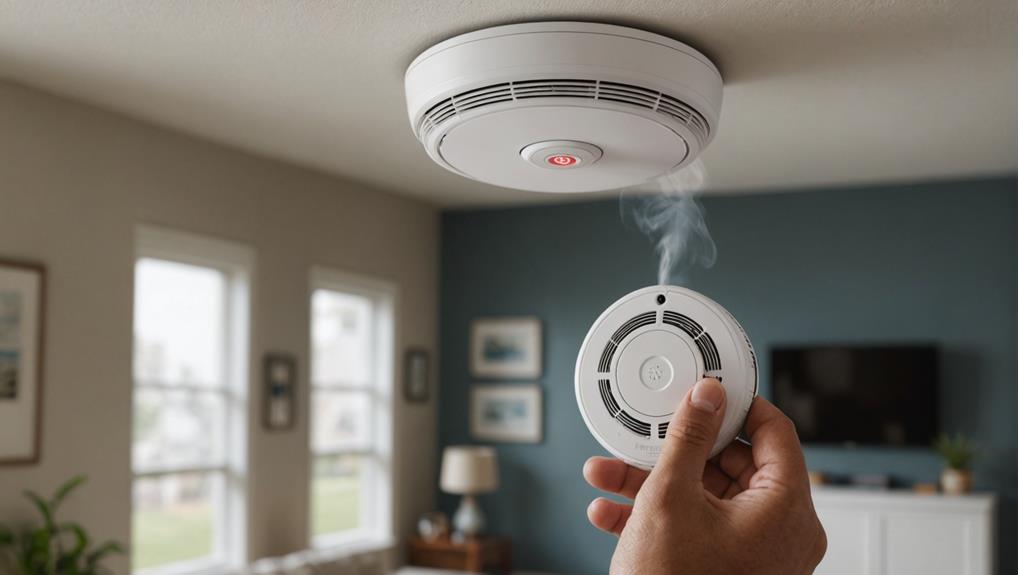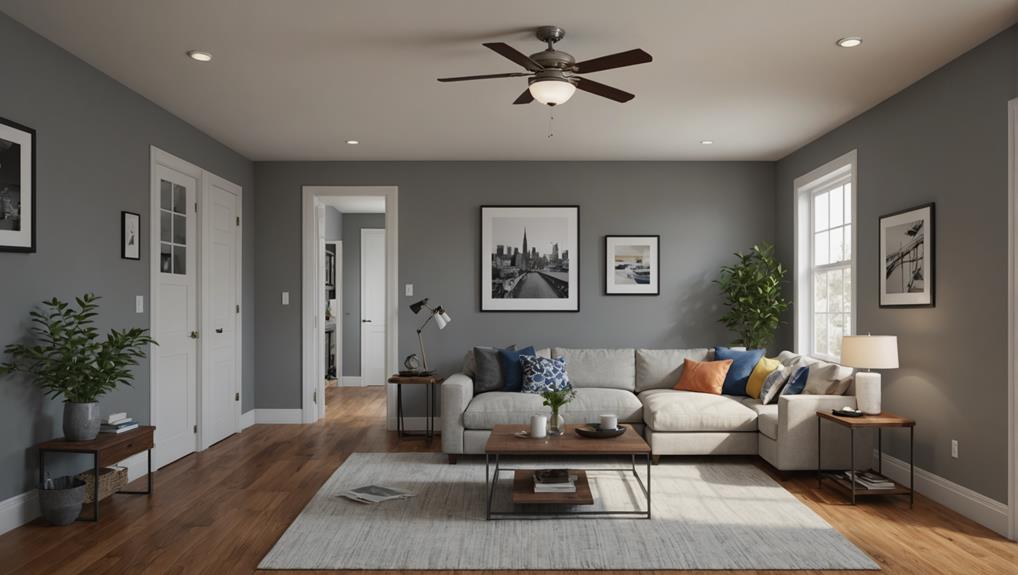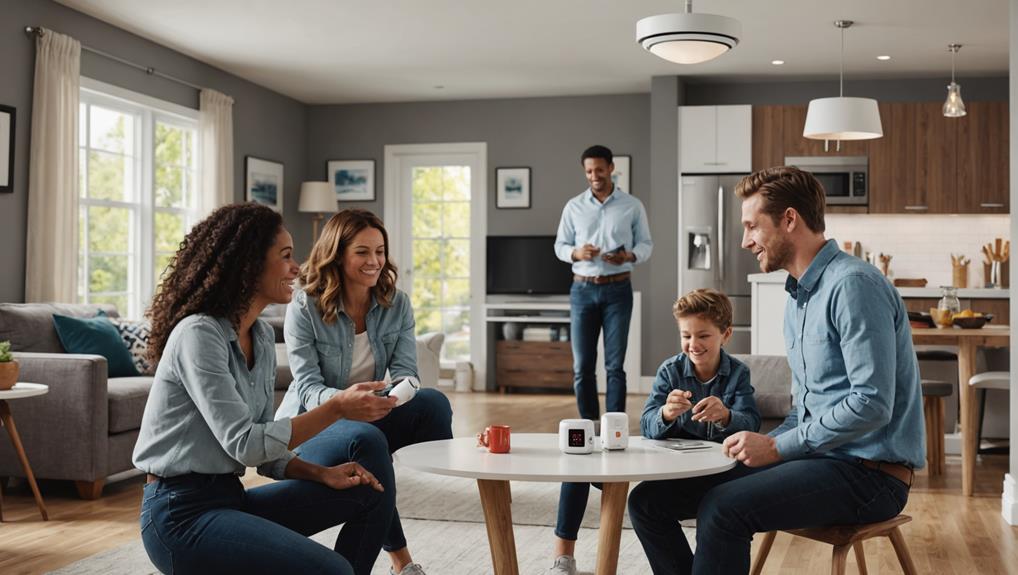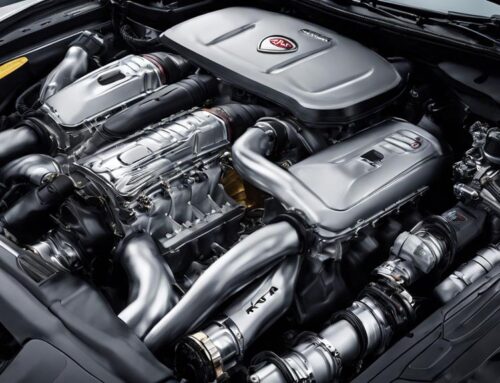To safeguard your home and loved ones, having smoke and carbon monoxide detectors is crucial for early hazard detection. Both detectors play a critical role in home security by alerting you to fires and dangerous gas leaks promptly. Regular testing and maintenance guarantee these devices work effectively in protecting your family and property. Understanding the various alarm types, proper placement, and legal compliance guidelines further enhance safety measures. By prioritizing the installation of detectors and following maintenance recommendations, you take an essential step towards creating a secure living environment for everyone.
Key Takeaways
- Smoke detectors provide early fire detection.
- Carbon monoxide detectors detect hazardous gas.
- Both types enhance home security significantly.
- Regular maintenance ensures detector reliability.
- Compliance with safety standards is crucial.
Detector Inspection Importance

Regular inspections of your smoke and carbon monoxide detectors are essential to guarantee they’re in working order and can promptly alert you in case of emergencies. Ensuring the functionality of these detectors is vital for your safety and the safety of your loved ones.
By conducting regular checks on your smoke detectors and carbon monoxide detectors, you can rest assured that they’ll function effectively when needed most. Compliance with local safety regulations often mandates these inspections to enhance overall home safety.
It’s advisable to schedule certified professionals for these inspections to verify the reliability and effectiveness of the detectors, ensuring peak performance. Additionally, routine inspections help identify any necessary replacements, as smoke alarms should be replaced every 10 years and CO detectors every 5-7 years for continued safety.
Understanding Alarm Types

Understanding the different types of alarms is vital for effectively safeguarding your home against potential dangers. When it comes to home security alarms and fire safety, knowing the distinctions between alarm types can make a significant difference in protecting your household. Here are some key points to take into account:
- Smoke Alarms: These alarms come in two primary types – ionization sensors and photoelectric sensors. Ionization sensors are more responsive to fast-burning fires, while photoelectric sensors excel at detecting smoldering fires. For enhanced safety, dual-sensor alarms combine both technologies.
- Carbon Monoxide Detectors: These detectors use electrochemical sensors to identify the presence of carbon monoxide, a lethal gas produced by incomplete fuel combustion. Since smoke alarms don’t detect carbon monoxide, it’s important to have separate CO detectors in your home.
- Maintenance: To guarantee peak functionality and safety, replace smoke alarms every 10 years and CO detectors every 5 to 7 years.
Install smoke alarms in every bedroom and place CO detectors near sleeping areas and fuel-burning appliances for thorough protection against fire and carbon monoxide poisoning.
Carbon Monoxide Safety Measures

When it comes to safeguarding your home and family from the dangers of carbon monoxide, implementing essential safety measures is vital. CO detectors play an important role in home protection by monitoring the presence of this silent killer.
Make sure you integrate CO detectors into your security setup to provide early warnings in case of any CO leaks. Place these detectors strategically near sleeping areas and fuel-burning appliances to enhance their effectiveness.
To maintain a safe environment, regularly inspect and maintain your heating systems and appliances. Test your CO detectors monthly and replace them every 5 to 7 years to guarantee peak performance.
Stay aware of common CO sources like vehicles and generators to prevent dangerous gas build-up. Installing CO detectors on every level of your home greatly enhances safety, as they can alert you to hazardous CO levels before any symptoms of poisoning manifest.
DFS Code Compliance Details

To guarantee compliance with safety regulations regarding smoke and carbon monoxide detectors, homeowners must be aware of the responsibilities overseen by the DFS Code Compliance office. Here are three key points to reflect upon:
- Contact Information: The DFS Code Compliance office, located at 1 State Road, Stow, MA 01775, can be reached at (978) 567-3375 during office hours from 8 a.m. to 4 p.m. Feel free to inquire about detector compliance or any related concerns.
- Local Building Codes: Compliance with local building codes is essential for maintaining safety standards in residential properties. This includes the proper installation of smoke and carbon monoxide detectors to guarantee the well-being of occupants.
- Legal Requirements: Many states mandate the presence of smoke detectors in homes and carbon monoxide detectors in residences with fuel-burning appliances.
Adhering to these regulations not only enhances safety but also guarantees legality, preventing penalties and maintaining eligibility for home insurance coverage.
Stay informed and compliant for a secure living environment.
User Feedback Enhancement Tips

For ideal user experience on Mass.gov, providing feedback is essential in enhancing the accessibility and usability of information regarding smoke and carbon monoxide detectors. When offering feedback, focus on aspects like navigation, clarity of information, and overall user experience related to safety and compliance guidelines for detectors. Remember to avoid sharing personal details to uphold privacy and security standards. Joining a user panel provides an opportunity to participate in ongoing testing and evaluation of content, shaping future enhancements for all users. Specific suggestions for improvement can greatly increase public awareness and education on the importance of smoke and carbon monoxide detectors in home safety.
| User Feedback Enhancement Tips | |
|---|---|
| Focus on navigation | Avoid sharing personal information |
| Emphasize clarity of information | Join user panel for ongoing tests |
| Enhance overall user experience | Provide specific improvement ideas |
Detector Installation Guidelines

Proper installation of smoke and carbon monoxide detectors is essential to guaranteeing the safety of your home and loved ones.
To maximize the effectiveness of these life-saving devices, follow these installation guidelines:
- Smoke Detectors:
- Install in every bedroom, outside sleeping areas, and on every level of the home for thorough coverage.
- Avoid placing near kitchens, bathrooms, or areas with high humidity to prevent false alarms.
- Regularly check the placement during home safety inspections to guarantee peak performance.
- Carbon Monoxide Detectors:
- Place on every level, especially near sleeping areas, and mount at least 5 feet above the floor.
- Install at least 15 feet away from fuel-burning appliances to prevent unnecessary triggering.
- Check functionality during routine inspections to comply with safety standards.
Maintenance and Replacement Recommendations

You must guarantee the ideal functionality of your smoke and carbon monoxide detectors by following recommended maintenance and replacement guidelines.
Regular testing, timely replacements, and thorough cleaning are key to keeping your detectors in top condition.
Remember to replace batteries annually or when they signal low power to assure uninterrupted protection for your household.
Testing Frequency
Regular testing of your smoke and carbon monoxide detectors is essential for maintaining the safety of your home and the well-being of its occupants.
Here are some key points to keep in mind:
- Monthly Testing: Make it a habit to test your detectors monthly to verify they’re working correctly and can alert you in case of an emergency.
- Replacement Schedule: Remember to replace smoke detectors every 10 years and carbon monoxide detectors every 5 to 7 years to guarantee they function effectively and reliably.
- Battery Maintenance: Regularly check and replace batteries in battery-operated detectors at least once a year or right away when you hear a chirping sound indicating low battery levels.
Replacement Guidelines
To maintain the effectiveness and reliability of your smoke and carbon monoxide detectors, it’s important to adhere to recommended replacement guidelines.
Smoke detectors should be replaced every 10 years to guarantee they can accurately detect smoke and fire hazards. Carbon monoxide detectors, on the other hand, typically need replacement every 5 to 7 years due to sensor degradation over time, which can compromise safety.
Remember to test both types of detectors monthly to confirm they’re functioning correctly. Additionally, replace batteries annually or when low battery signals occur to ensure uninterrupted protection.
Regular cleaning is essential to prevent dust buildup, which could lead to false alarms or hinder detection capabilities.
Keep a documented schedule noting installation dates and replacement timelines for all detectors to guarantee compliance with safety standards and peace of mind for you and your loved ones.
Cleaning Instructions
Cleaning your smoke and carbon monoxide detectors is essential for maintaining their performance and guaranteeing reliable detection of potential hazards.
To keep your detectors in top condition, follow these simple cleaning instructions:
- Regular Maintenance: Gently vacuum or use a soft brush to remove dust buildup that can impact the detectors’ effectiveness.
- Monthly Testing: Test your detectors monthly using the test button to confirm they’re working correctly. Remember to replace batteries annually or when the alarms chirp to signal low battery.
- Replacement Schedule: Smoke detectors should be replaced every 10 years, while carbon monoxide detectors typically need replacement every 5 to 7 years as recommended by manufacturers.
Keep a record of installation dates and set reminders for replacement to guarantee continued safety.
Frequently Asked Questions
Why Are Smoke and Carbon Monoxide Detectors Important?
Smoke and carbon monoxide detectors are essential for your safety.
Smoke alarms warn you of fires early, giving you time to escape. Carbon monoxide detectors protect you from a silent killer since CO is odorless.
Having both types keeps you safer since fires can also produce CO. Remember to test and maintain them regularly to guarantee they work when needed.
It’s not just about following rules; it’s about protecting yourself and your loved ones.
Why Is It Important to Have a Smoke Detector at Home?
Having a smoke detector at home is vital for early fire detection. It alerts you to danger before flames spread, potentially saving lives and property.
The National Fire Protection Association states that working smoke alarms can cut fire-related death risks by 50%. Make sure to install detectors in every bedroom, outside sleeping areas, and on each home level.
Regular testing and replacement every 10 years are essential for reliable functionality.
Do I Need a Smoke Detector and Carbon Monoxide Detector?
Yes, you need both a smoke detector and a carbon monoxide detector in your home.
They provide essential early warnings of fires and CO leaks, greatly reducing risks to your safety.
Remember to test them monthly and replace smoke detectors every 10 years and CO detectors every 5-7 years for best effectiveness.
Compliance with local regulations often mandates their installation, making them not just important for safety, but also a legal requirement in many areas.
Should Smoke Detectors Be Connected to Security System?
Yes, you should connect smoke detectors to your security system.
This connection guarantees immediate alerts to monitoring services, speeding up emergency responses in case of fire.
Integrated systems also offer real-time notifications through mobile apps, enhancing your awareness and enabling quick action.
Many security systems can even differentiate between smoke and carbon monoxide alarms, providing precise information during emergencies.
This setup can help keep you and your loved ones safe.
Conclusion
Overall, ensuring that your home is equipped with smoke and carbon monoxide detectors is vital for your safety and peace of mind. Regular inspection, understanding alarm types, and compliance with safety codes are all essential steps to take. By following proper installation and maintenance guidelines, you can greatly enhance the effectiveness of these devices in protecting your home and loved ones from potential dangers. Stay safe and secure by prioritizing the importance of these detectors in your home security system.









